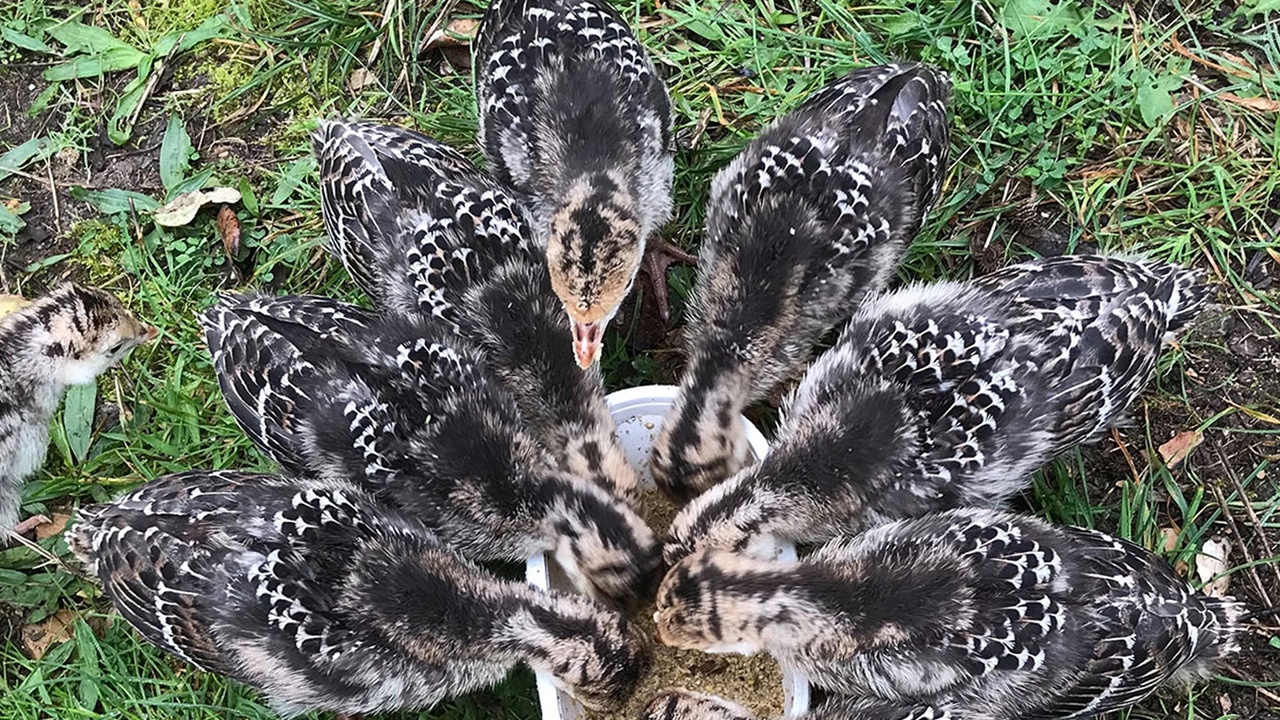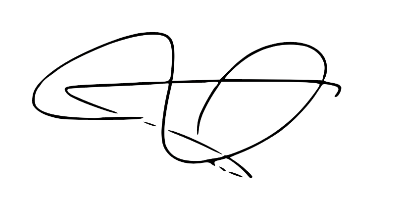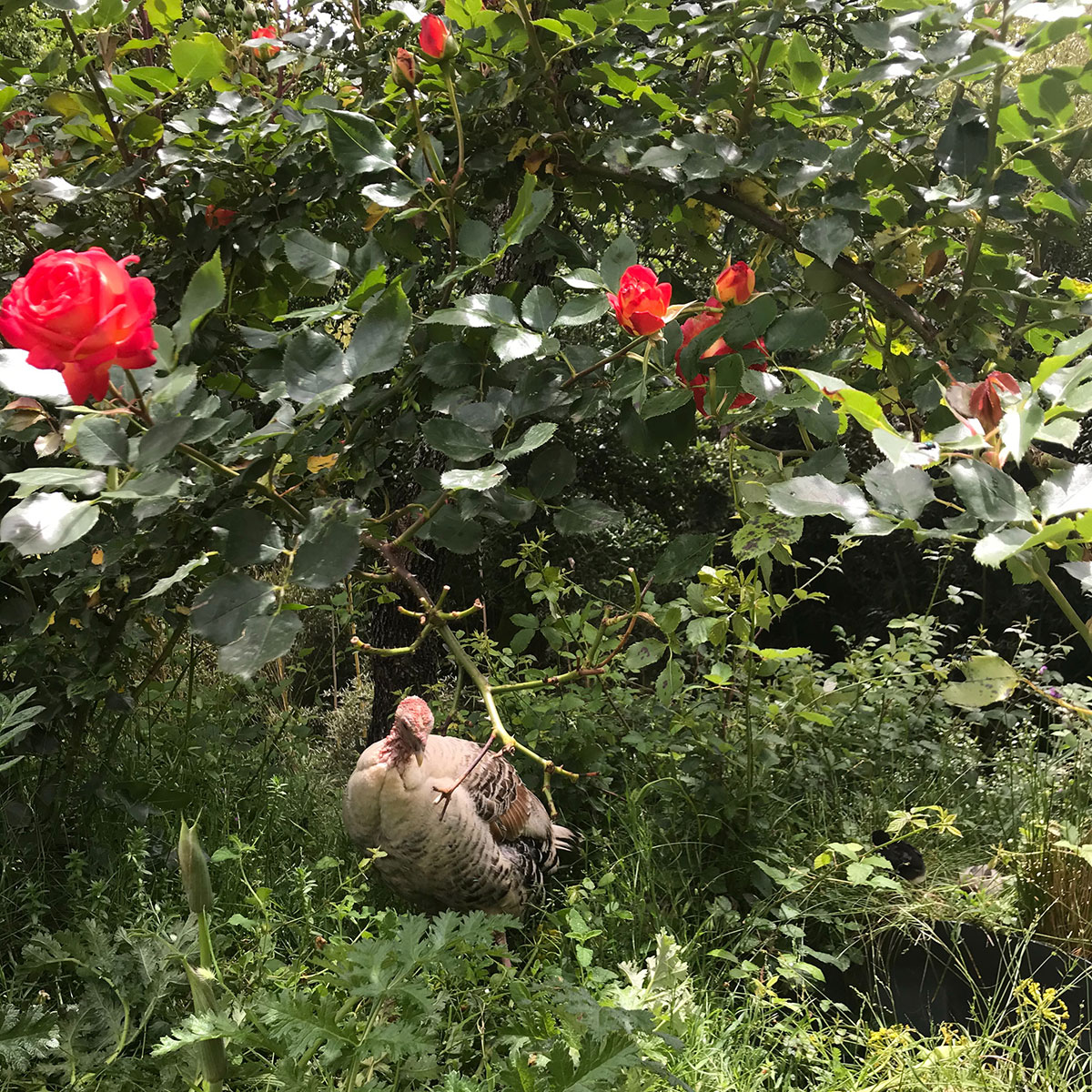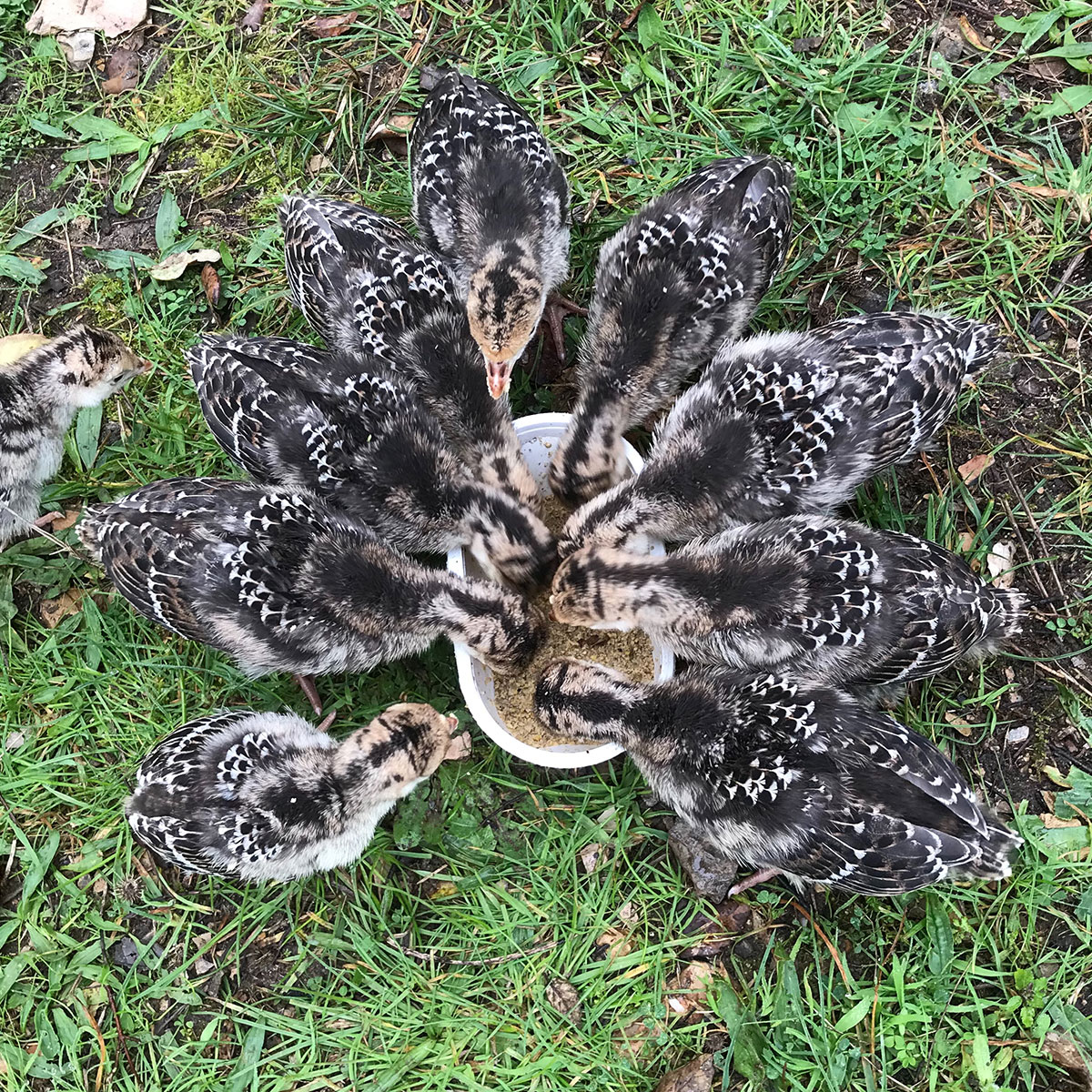Commusings: Gobble, Gobble - Lessons Learned From Raising Free-Range Turkeys with Marisa Dipaola
Nov 20, 2021
Hello Commune Community,
Today’s missive by Marisa Dipaola serendipitously landed in my inbox. Its title is certainly seasonally appropriate, but its underlying theme has been fluttering around my brain for a good year.
Evolutionary biology teaches us that under environmental pressure and random mutation, nature will select for the best genes. In this process of natural selection, genes that are the most suited for survival are passed along transgenerationally.
We conflate this phenomenon with a skewed, patriarchal conception of “survival of the fittest.” This notion conjures images of a gory zero-sum battle fought on the Serengeti (re: board room) with one chest-thumping conqueror who will pass his genome down like a monarch passes the crown.
However, when we more closely examine the natural world, “fittest” seldom means strongest or most aggressive. We find that the most successful phenotypes are often clever and cooperative in nature. And, as in the case of Marisa’s rafter of turkeys, these collaborative species trace their kinship through the female line.
I hope you enjoy Marisa’s heart-warming portrait of her sustainable farmstead in southwestern Portugal.
I am here at [email protected] and follow my exhortations on IG @jeffkrasno.
In love, include me,
Jeff

• • •
Gobble, Gobble
Lessons learned from raising free-range turkeys
by Marisa Dipaola
“Gobble, gobble, gobble,” someone shouts as they’re passing by our farm, sometimes with a Nepalese accent, as farm workers ride by on a tractor, and sometimes French, which I find particularly hilarious because it means the owner of Bambuparque, a Frenchmen in his late seventies, has decided to take part, too.
Usually our two toms: Cloudy & Cheetah, respond in kind, sending laughter throughout our valley and brightening everyone’s day.
We used to be just ordinary neighbors.
Well, as ordinary as we could be: two unknowns from unknown places, with free-range chickens and a free-range daughter. And then we got three turkeys as guardians for our free-range flocks.
“Guardians?” people asked us. “Why not just get a dog?”
It’s a complicated answer and one that doesn’t translate well, especially into Portuguese or the broken English most foreigners here speak.
So, I tell them I was homesick...
At the end of winter 2020, before the pandemic became a pandemic, here on our farmstead in southwestern Portugal we had our own problems: predators, lots of hungry predators, desperately searching our land for chicks to snatch and drag home for their next meal. Their wildlands are shrinking as more hedgerows and abandoned fields are plowed over and covered with plastic for growing raspberries.
Raspberries have recently become the cash crop her, and landowners have been enticed to lease their land to raspberry growers for quick, guaranteed profits. But no one asked the wild rabbits where they would go, and no one asked the foxes how they would be able to survive once the wild rabbits were displaced.
No one asked the mongeese, either. And definitely no one asked the storks how they felt about it, or how they might be impacted by losing their charcos, the marshlands that are their feeding grounds, that had always guaranteed enough food for their offspring.

Cheetah during his dance display.
This spring we rescued a month-old baby stork that had fallen, or been pushed, from its nest high above the orange trees in the orchard near our farm. Their nearest charcos had been plowed and replaced by a raspberry farm and many desperate stork parents, or larger siblings, have pushed a second child out of the nest if there isn’t enough food to feed both young.
We named her Spirit. She was smaller than a chicken, had a cut on her skull and a concussion, and couldn’t yet stand on her own. For the first few days we didn’t think she’d survive. But she survived and thrived, learned to stand, and then walk, and then hung out with the turkeys until she learned to fly, mostly by flapping her wings while bouncing on our daughter’s trampoline.
By now our flock of turkeys number in the dozens, and they all sleep up on our roof until the hens start laying large speckled eggs in dug-out nests, usually under the blackberry thickets. A month or so later, little speckled helpless chicks hatch, and the foxes are usually around waiting.
I grew up in rural south Jersey, and once woke to the sound of gobbling as a wild tom had gotten into our backyard but needed help getting out again. But my most memorable experiences with wild turkeys were from when I lived in Vermont and New Hampshire, where wild flocks usually numbered two dozen and grazed in the old orchards and hillsides.
I would often see them when I was out foraging — equals wandering the wilds searching for tasty morsels.
Tending to free-range turkeys has been a completely different experience, and enlightening on so many levels. Our turkeys are matrilineal, and our two leading hens are the deciding voices as to where the flock forages and when the flock moves. They use their calls to lead the way, foraging amongst the forest and meadows, fields and riverbanks, and occasionally along the road. Here they’ve met the neighbors, who wait patiently as the flock decides which ways to go to get off the road and let the motorists pass.
Rose, our oldest and wisest turkey hen, always has an eye to the sky, spotting hawks when they’re only a speck, and making an alert call that now all our birds, young and old, turkey and chicken, heed and hide. Rose also has an ear to the forest, listening for wild birds that warn when predators are roaming.
She’s raised dozens of children, and when her oldest daughter came of age, they shared a giant nest to raise their young together. Two moms are much safer, especially when a predator is near, and especially with over a dozen little chicks to look after. She’s also raised a half dozen chickens, who have become the smartest, wildest, and most able chickens in our flock.
At first I was cuckooing the turkeys’ nest, as baby chickens are more durable than turkey chicks, and only need three weeks to incubate, so I’d roll fertile chicken eggs over to the turkey nests after a week of traditional brooding. Then Dolphin, one of our smallest Andalusian blue chicken hens, began cuckooing her eggs herself, climbing in the turkey’s nest to lay eggs while they were out.
Rose always got her young out and moving by their second day: sunbathing, pecking, scratching, dust bathing, and most importantly, learning to hide at the first “peeking” alert call; all these are covered from a chick’s first steps. Preening comes next, as the little fluffets start to grow in their first feathers. After a few days, they learn to use their wings, first to help with running, as ostriches do, and then progressing to short flights within two weeks of hatching. We call this “survival school” and Rose is their advanced teacher. The second mom brings up the rear, serving as a warming tent for those that are cold, hatched late, injured, or otherwise need extra time before progressing to the next “grade.”

Sunshine, Rose’s oldest daughter, leading their hatchlings out of the nest.
Yes, sometimes the young get captured and taken, or fall victim to natural dangers of accidental drownings and frost. We’ve performed first aid, trauma care, and physical therapy as well as we can, using homemade herbal salves and, often, our own hoodie pockets to care for the injured and disabled until they recover or perish. Lucky, the first chick we helped to recover after a mongoose attack has outgrown her limp, but not her leftward curved tail, and has hatched fourteen chicks herself. In many ways, we’ve mourned their young more than they, because we’ve loved and hand-fed them all — and the mother hens still have others that need their time and care, and they are deeply embedded into the circle of life.
As our flocks have grown, matrilineal disputes have subsided, as they’ve selected two mature sons, one for each family to mate with, for their male representatives.
The toms used to be quite aggressive, spending their days face-in-beak neck-wrestling each other in pointless displays of aggression. Then Cloudy found and ate our San Pedro cactus 🌵. After an afternoon wandering around starry-eyed,
he became less interested in fighting, and therefore more available for his real role of standing watch while the hens lay eggs. His dueling partner never learned, and was sold as part of a mating pair to another farm. Twilight, the other matriarch, had two sons, and one of them, Cheetah, learned quickly that aggression only gets you replaced, so he performs his duties proudly, and avoids violence.
The males flare their striped wings and tail and dance, slowly spinning while thumping the ground and releasing pulses of energy through the beard on their chest. Once a hen is interested in a mate, she walks in front of her chosen suitor and begins to circle with him, gaining his attention with her graceful dance. Then she sits before him, for him to mount her. It’s quite a display, as their circling movements remind us of capoeira, and their peaceful consent is at odds with domestic rooster mating, which is usually quick and lacking consent. Though now, I must admit, we’re beginning to breed aggression out of our roosters, too, as jerks are quickly eaten and gentlemen earn a place as loyal companions to our hens. Orca, our most recent rooster, has even begun turkey dancing to lure his ladies to food and frolic.
We still have predators, and in the desperate times of spring and summer, they’ll risk all to come into our valley. But now we’re always alerted, and are often able to protect everyone from harm. When mongeese descend our hillside, all adult birds form a line, a few feet apart, and cluck and call and push back the threat, together, unified as a team.
Now our neighbors often stop in the road, gazing in amazement as the turkey hens lead a line of little stumbling offspring throughout our yard. They’re beginning to see the magic of our free-range poultry roaming in this secluded valley.
And I’ve grown tired of diminutive expressions such as “bird-brained,” where humans think themselves smarter than untrained domesticated animals.
In reality, it’s the confinement of domestication that is “bird-brained,” as these animals have wisdom and grace, and eagerly live their lives with sense and dignity and compassion when given the opportunity to thrive in their wildness.

Our turkey chicks sharing a meal.
• • •
About Marisa Dipaola
Marisa is a painter, sculptor, and installation artist who migrated from one artist's residency to the next, making artwork from detritus about communion with the natural world. While on a residency in Bahrain, she met her husband Mohamedo. After travelling together across the U.S. and living in the foothills of the Austrian Alps, they settled in southwestern Portugal and cofounded the moonfarmers, a sustainable and biodynamic farmstead where they raise free-range chickens and turkeys, and their daughter Marmalade. If you’re curious, you can find them on Instagram @moonfarmers.
Leading teachers, life-changing courses...
Your path to a happier, healthier life
Get access to our library of over 100 courses on health and nutrition, spirituality, creativity, breathwork and meditation, relationships, personal growth, sustainability, social impact and leadership.
Stay connected with Commune
Receive our weekly Commusings newsletter + free course announcements!


